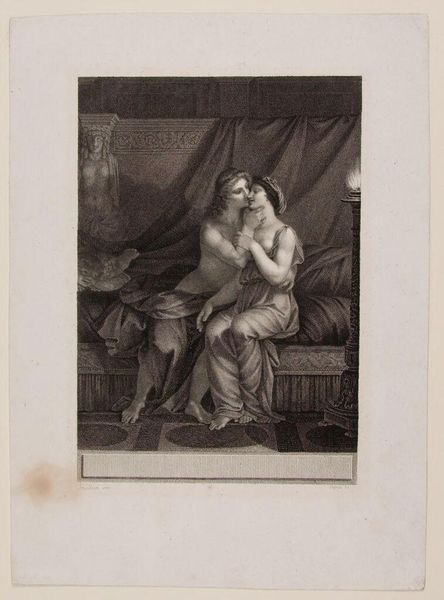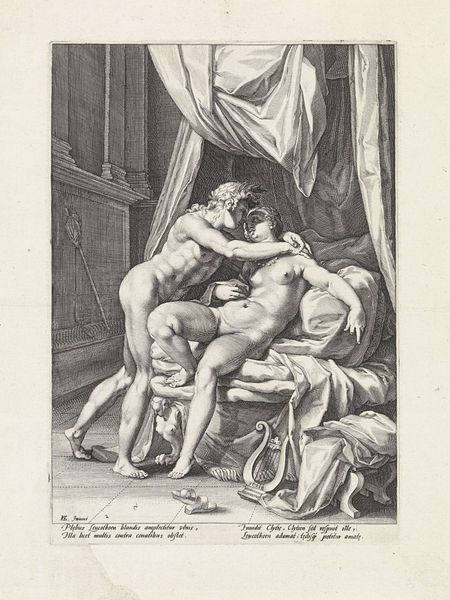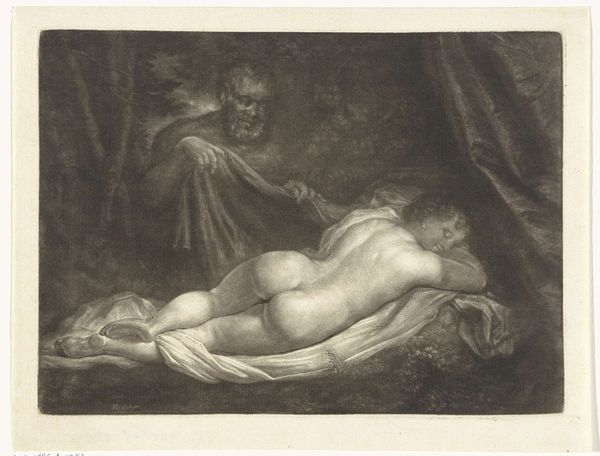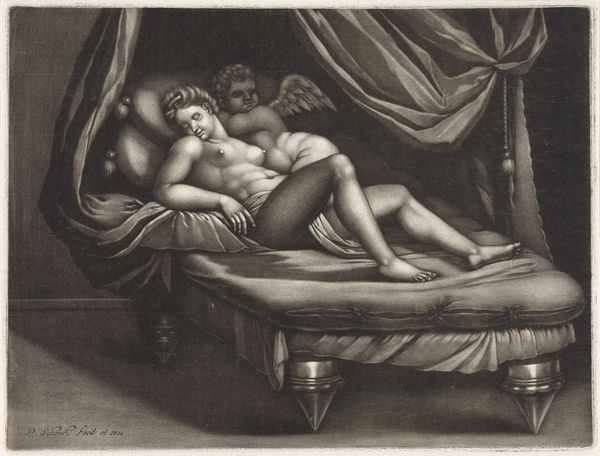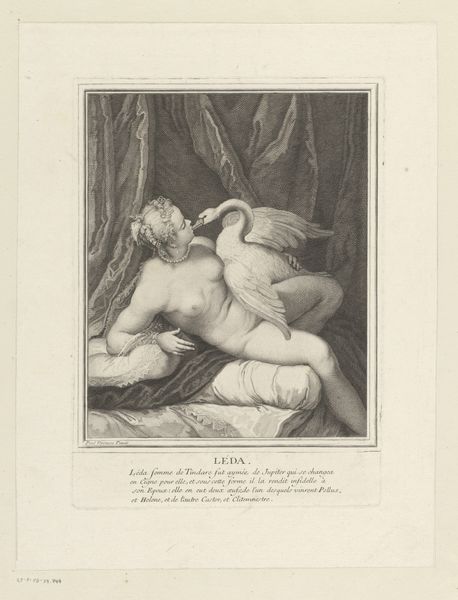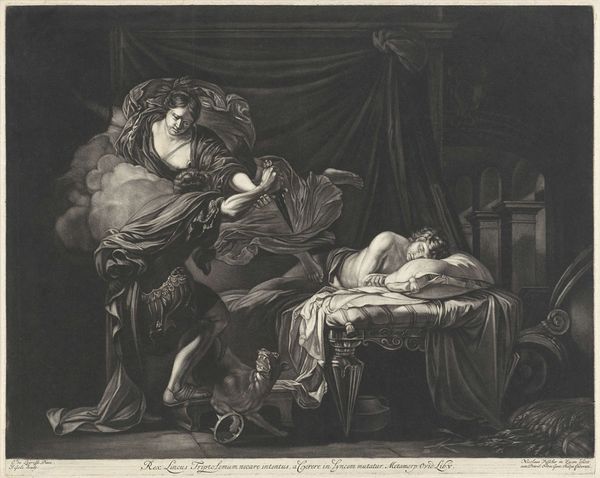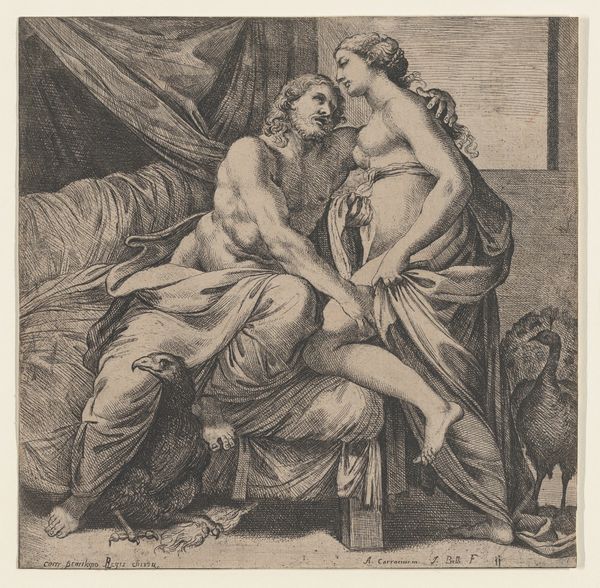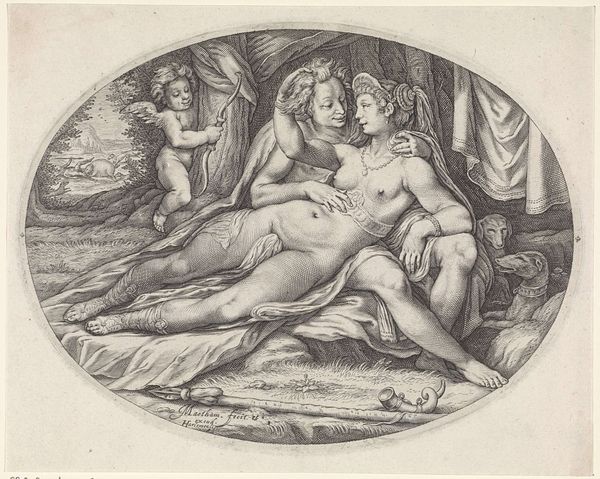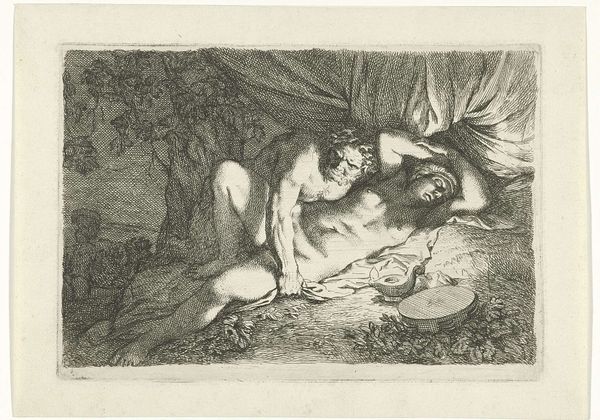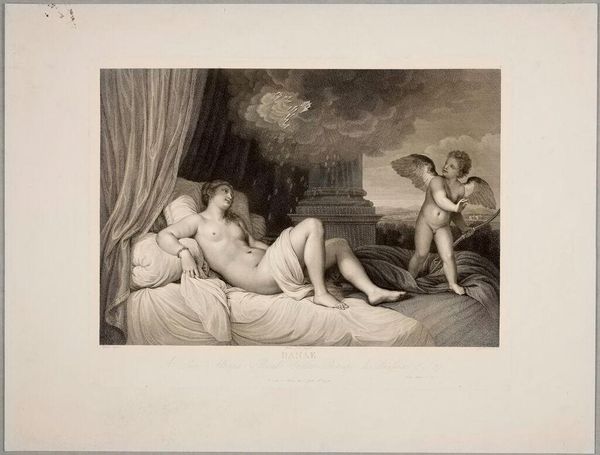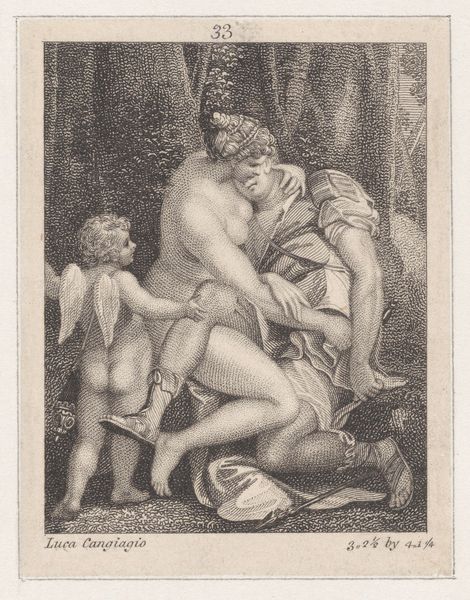
engraving
#
allegory
#
baroque
#
charcoal drawing
#
figuration
#
line
#
history-painting
#
nude
#
engraving
#
erotic-art
Dimensions: height 215 mm, width 287 mm
Copyright: Rijks Museum: Open Domain
Editor: We're looking at "Venus en Amor," an engraving dating between 1659 and 1740 by Jan van der Bruggen. It's got a real Baroque feel with all that dramatic shading. I am mostly struck by how intimate it seems... a goddess at rest with her son. What do you see in this piece? Curator: Intimacy is key, I think. Consider the texture of the engraving itself, the lines pressed into paper – that tactility speaks to the closeness. I am struck by this balance between the eroticism inherent to such depictions and the more tender mother-son vibe that is at play, but is that truly what we are looking at? The artist forces us to consider our expectations... Look closer: isn't the figure of Venus rendered with a deliberateness which flirts with—how to put it?—a certain theatricality, like they are a part of the performative element inherent to this genre? Editor: A performance? Like they are aware of being watched? Curator: Perhaps... and does that recognition take away from your initial read of an "intimate moment?" Consider, too, the very conscious decision of van der Bruggen in using line, of all things! I find line work can carry an almost aggressive power. He is playing with fire! Editor: That’s an interesting point. The lines do seem very deliberate, almost… bold. They contrast so strongly with the soft subject matter. I didn't think of it that way initially, but now I see what you mean. The bold engraving undercuts any assumed or expected quietude or softness that the "mother and child" depiction may initially project. It is so subversive, really. Curator: It's precisely this tension—between tenderness and the assertive line—that, for me, elevates this above simple Baroque figuration. You have your answer, my friend!
Comments
No comments
Be the first to comment and join the conversation on the ultimate creative platform.
